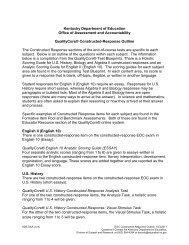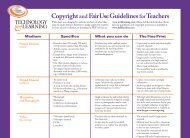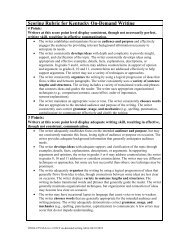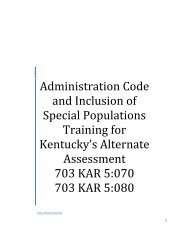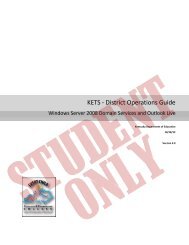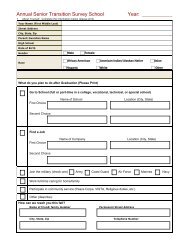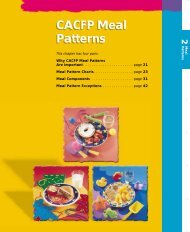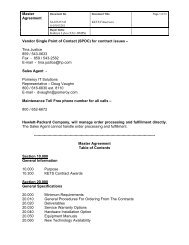Standards with Progressions grades K-HS v. 1.3 - Kentucky ...
Standards with Progressions grades K-HS v. 1.3 - Kentucky ...
Standards with Progressions grades K-HS v. 1.3 - Kentucky ...
- No tags were found...
Create successful ePaper yourself
Turn your PDF publications into a flip-book with our unique Google optimized e-Paper software.
Domain: Geometry<br />
Kindergarten Grade 1 Grade 2<br />
Identify and describe shapes (squares, circles,<br />
triangles, rectangles, hexagons, cubes, cones,<br />
cylinders, and spheres).<br />
K.G.1: Describe objects in the environment using<br />
names of shapes, and describe the relative<br />
positions of these objects using terms such as<br />
above, below, beside, in front of, behind, and<br />
next to.<br />
K.G.2: Correctly name shapes regardless of their<br />
orientations or overall size.<br />
K.G.3: Identify shapes as two-dimensional (lying in a<br />
plane, “flat”) or three-dimensional (“solid”).<br />
Analyze, compare, create, and compose shapes.<br />
K.G.4: Analyze and compare two- and three<br />
dimensional shapes, in different sizes and<br />
orientations, using informal language to describe<br />
their similarities, differences, parts (e.g., number<br />
of sides and vertices/“corners”) and other<br />
attributes (e.g., having sides of equal length).<br />
K.G.5: Model shapes in the world by building<br />
shapes from components (e.g., sticks and clay<br />
balls) and drawing shapes.<br />
K.G.6: Compose simple shapes to form larger<br />
shapes. For example, “Can you join these two<br />
triangles <strong>with</strong> full sides touching to make a<br />
rectangle”<br />
Reason <strong>with</strong> shapes and their attributes.<br />
1.G.1: Distinguish between defining attributes (e.g., triangles are closed<br />
and three-sided) versus non-defining attributes (e.g., color,<br />
orientation, overall size); build and draw shapes to possess defining<br />
attributes.<br />
1.G.2: Compose two-dimensional shapes (rectangles, squares, trapezoids,<br />
triangles, half-circles, and quarter-circles) or three-dimensional<br />
shapes (cubes, right rectangular prisms, right circular cones, and<br />
right circular cylinders) to create a composite shape, and compose<br />
new shapes from the composite shape. (Note: Students do not<br />
need to learn formal names such as “right rectangular prism.”)<br />
1.G.3: Partition circles and rectangles into two and four equal shares,<br />
describe the shares using the words halves, fourths, and quarters,<br />
and use the phrases half of, fourth of, and quarter of. Describe the<br />
whole as two of, or four of the shares. Understand for these<br />
examples that decomposing into more equal shares creates smaller<br />
shares.<br />
Reason <strong>with</strong> shapes and their attributes.<br />
2.G.1: Recognize and draw shapes having specified attributes, such as a given number<br />
of angles or a given number of equal faces. (Note: Sizes are compared directly<br />
or visually, not compared by measuring.) Identify triangles, quadrilaterals,<br />
pentagons, hexagons, and cubes.<br />
2.G.2: Partition a rectangle into rows and columns of same-size squares and count to<br />
find the total number of them.<br />
2.G.3: Partition circles and rectangles into two, three, or four equal shares, describe<br />
the shares using the words halves, thirds, half of, a third of, etc., and describe<br />
the whole as two halves, three thirds, four fourths. Recognize that equal shares<br />
of identical wholes need not have the same shape.<br />
<strong>Kentucky</strong> Department of Education<br />
8 | P a g e




